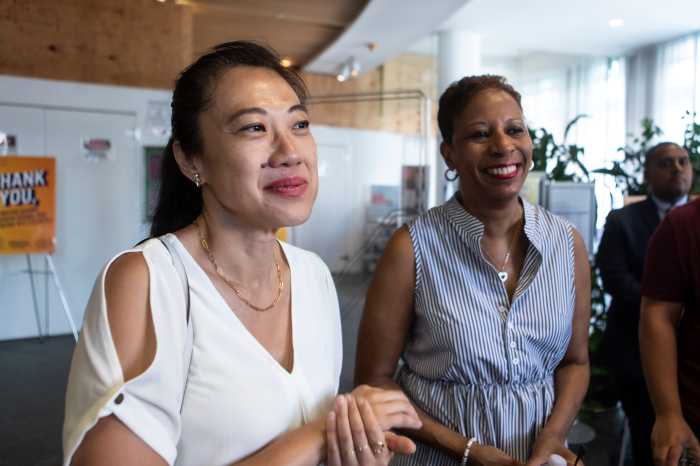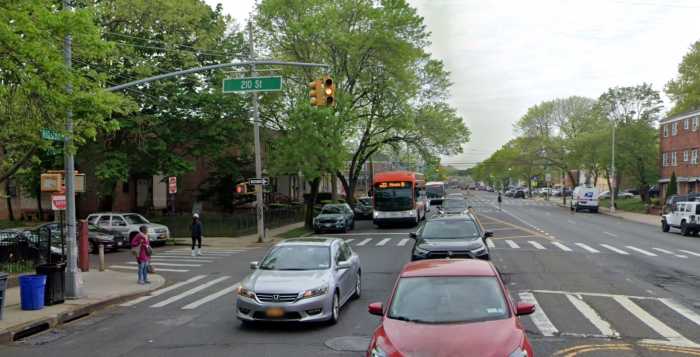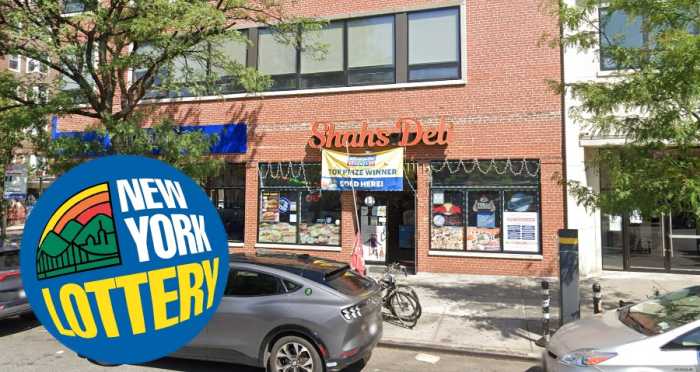By Bob Harris
The civic associations were formed into a number of councils. There were the Eastern Queens Civic Council Inc., headed by Albert Greenblatt; the United Civic Council Inc., led by Bob Harris; and the Mid-Queens Community Council Inc., headed by Shirley Weinstein.
Previous councils such as the Central Queens Allied Council, the Southern Queens Civic Council, the North Shore Council of Homeowners and the Queens County Civic Council had ceased to exist mostly because their leaders had died and no others had emerged to take on the chore of coordinating them.
These councils had united as the Federation of Civic Councils of the Borough of Queens as a way to make their voices heard. There were civic conventions, where government leaders such as Borough President Donald Manes, Borough President Claire Shulman, Judge Joseph Mogdugno, Mr. Richard Ravitch, DA John Santucci, Mayor Rudy Giuliani and various civic leaders spoke. A platform of wants and needs was prepared for each convention. At its height there were about 100 civics involved.
Some of the borough civic leaders 15 years ago have died, some are just retired from civics and some are still active. Some leaders were Al Greenblatt, Julia Jerry, Jack and Yolanda Norris, Corey Bearak, Mary Parella, Rose Dadderio, Rick Cannon, Jim Trent, Sean Walsh, Phil Plasencia, Patricia Dolan, Emma Eberlin, Richard Hines, Helen Trent, Rick Hellenbrecht, Shirley Weinstein and Milton Schlessinger.
Eventually the Joint Community Council of College Point Inc., headed by City Councilman Tony Avella (D-Bayside) joined the Federation of Civic Councils. One has to remember that all these people were and are volunteers.
Many of the issues 15 years ago were similar to those of today. They included zoning and land use, public education, public safety, delivery of services and economic development and business. Seven years ago, as our quality of life became even more threatened, the civics decided to create a more unified and centralized organization. There was so much anger that there was consideration of Queens' secession from NYC in 1994.
The above leaders, who were still active, created the Queens Civic Congress. Today the Queens Civic Congress has more than 100 civic associations from all over Queens. Some civics have been involved for decades but some are new or reborn civics that had become dormant.
The pressures of developers, community facilities and illegal conversions, in addition to other area issues, have motivated many to make their civic, block or tenant associations more active. Many of these associations are chartered by the New York secretary of state, so their leaders have a certain amount of protection as members of a corporation.
Executive boards meet to analyze issues. Membership meetings can make policies and are a place where city officials and legislators can hear concerns and describe how they are going to address the problems that bother homeowners.
Civic and tenant meetings may feature city, state or federal legislators, or they may just drop in to see and be seen. Local community affairs police officers or even the captain of the precinct may attend a meeting. Sometimes a Department of City Planning, Buildings or Sanitation member may speak to the group.
The Kew Gardens Hills Civic Association recently had Mayor Mike Bloomberg as the featured speaker. Enforcement of the zoning laws, the pressure of illegal apartments, the building of McMansions in one-family neighborhoods and the disruption by some community facilities were some of the topics about which the mayor spoke.
The May 2 fourth biennial Queens Civic Congress luncheon/convention at Antun's Caterers in Queens Village saw about 400 civic leaders mingling with scores of city council members, state legislators and congress members. The keynote speaker was U.S. Sen. Charles Schumer, who is from Queens County. Former Queens Borough President Claire Shulman was presented with an award for her past concerns about the quality of life in Queens.
The participants of the program show the widespread concerns and involvement of the Queens civic associations. The emcee for the QCC luncheon convention was Edwin Westley of the Jackson Heights Beautification Group; the welcome was by QCC President Sean Walsh of the Douglaston Civic Association; the acknowledgment of honored guests was by Corey Bearak of the North Bellerose Civic Association; the Pledge of Allegiance by state Sen. Frank Padavan; and the singing of the national anthem by Paul Kerzner of the Ridgewood Property Owners.
Some luncheon committee members were Richard Hellenbrecht of the Bellerose Commonwealth Civic Association; Nagassar Ramgarib of the Queens Village Civic Association; and Seymour Schwartz of the Briarwood Civic Association. Vice presidents of the QCC are Tyler Cassell of the North Flushing Civic, Tina Chan of the Kew Forest Neighborhood Association and Ken Cohen of the Flushing Suburban Civic Association. The founders are Albert Greenberg of the Lost Community Civic and Bob Harris of the West Cunningham Park Civic Association.
The treasurer is Jim Trent of the Creedmoor Civic Association. The Greater Astoria Historical Society and the Southeast Queens Concerned Neighbors are just two groups that represent the concerns of citizens, homeowners and tenants from opposite ends of Queens. Over the past years Queens civics have become more frustrated, active and militant.
On June 2 an ad hoc coalition of civic and preservation groups, made up mostly of civic associations belonging to the Queens Civic Congress, held a demonstration in front of Queens Borough Hall at 3 p.m., with more than 200 people holding signs and chanting against the overbuilding of Queens. After decades of civic meetings, conventions, newsletters and letters to the editor, people stood up to be counted.
While many civic leaders were present, many could not come because they were at work. A few of Queens Borough President Helen Marshall's assistants and advisors came out to see the demonstration. When I asked where Marshall was they replied that she was meeting with the mayor. Work comes first.
Trent and Stanley Cogan, the borough historian who is president of the Queens Historical Society, led the rally. Protesters held up signs indicating that they had come from communities all over Queens.
Signs read, “Stop overbuilding Queens,” “We will not accept the destruction of our community” and “Rezone Queens.” One sign criticized the Department of Buildings for ignoring the overbuilding. Participants in the rally chanted “Enough is enough.”
They expressed concern about the paving over of lawns and the walling off of homes; the rebuilding of existing homes with oversized, noncontextual architecture; illegal conversions; inappropriate zoning; the demolition of historic buildings; and a Board of Standards and Appeals that too readily grants variances for larger buildings. Avella and Councilman John Liu (D-Flushing) also were present, as were representatives of several other legislators.
If there had not been coordination and cooperation of civics through the Queens Civic Congress, a successful rally such as the aforementioned could not have taken place. The Waldheim Neighborhood Association's Paul Graziano, who is chairman of the QCC Land Use Committee, is also a neighborhood preservationist who is passionate about saving historic communities from destruction.
A week after the rally Marshall issued a five-point plan to roll back the tide of illegal conversions (apartments). Many of her ideas have been discussed by civic association leaders. If she can get the various city agencies to back her proposals then the gradual destruction of many fine communities will stop.
These proposals are the result of years of actions by civic associations. They have to be implemented or Queens will gradually turn from a green suburban area to an asphalt jungle.
Leaders from the QCC are in contact with similar groups in other boroughs. Civic associations and preservation groups in other parts of our city have the same concerns. As time passes the civics become more efficient in coordinating with other groups in other parts of our city and in working to preserve what we have. A lot has happened in the past 15 years and more will happen in the next 15 years.


































